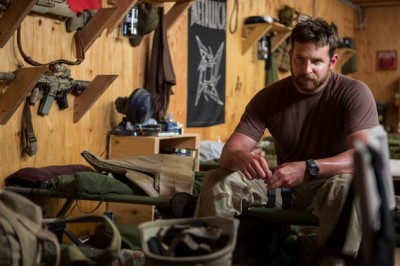Film Review: American Sniper
I saw a dangerous pro-war movie, not the anti-war film described by the director and producers.

I saw a dangerous pro-war movie, not the anti-war film described by the director and producers.
‘American Sniper’ is a popular war movie about an actual decorated US sniper, Kyle, who claimed 255 ‘kills’ in Iraq. Kyle is a ‘good guy’ from Texas who failed as a cowboy only to find his true calling as a sniper in the Navy Seals.
The sniper kills from his rooftop perch, including a woman and a young boy who attempt to throw a bomb at the American invaders. He is a cog in a war killing machine.
Killing at times appears to trouble his conscience, but as a macho Navy Seal he is taught to do his job as a loyal patriot of his country.
The real Kyle was killed in the US by a fellow veteran whom Kyle offered to help overcome his Post Traumatic Stress Disorder. Both were victims of PTSD.
The movie was adapted from the best selling and controversial 2012 book: American Sniper: The Autobiography of the Most Lethal Sniper in U.S. Military History (above), which netted Kyle’s family $3 million.
The film is the highest-grossing war movie ever, netting $0.5 billion. The film won 9 of 30 film awards nominated.
Because American Sniper is beautifully-produced, it appears to me to be a dangerous pro-war propaganda film, supporting an old colonial strategy that might is right. It invites young people to join the military, learn a trade and make money from the killing machine — all in the name of protecting ‘our way of life.’ ‘We must kill’ them with new weapons of mass destruction, because ‘they’ threaten ‘us,’ goes the argument. This is a deadly knee-jerk reaction orchestrated by politicians, military generals, and those seeking opportunities to profit from killing.
In my opinion, director Clint Eastwood’s claim that American Sniper is an anti-war apolitical film lacks context. It depicts the Iraqi people as savages and terrorists who must be destroyed because they threaten the American way of life. Much is missing:
- This and most military films don’t mention the alternative paradigm of nonkilling peacemaking.
- The repugnance of militarism and war as an institution with no viable future. As Mahatma Gandhi once said: ‘An eye for an eye makes everyone blind.’ The film continues the notion that war is the way of the future.
- We are dealing with ‘blood oil,’ cheap oil for North America, taken by violent invasion if necessary, and the failure of the leadership to deal with climate change. The solution is to develop alternative sources of energy in ones own country.
- We see the failure of the leadership to learn the basic lessons of physics: ‘For every action there is an equal and opposite reaction’. The remedy: Stop poking your nose into someone else’s business. Bring your troops home.
- The film lacks humanizing the opponents in the battle. The military model is demonizing in that it pursues ‘us against them’ solution, without any attempt at discovering friends.
- There is no mention of why the Americans invaded Iraq in the first place. No mention is made of money, oil, and a faulty foreign policy based on ‘exceptionalism.’
- No mention is made of the money spent on war preparations, on spying, on secrecy and war itself. Just think of how trillions of dollars could be used to solve poverty, housing, healthcare, education, and cultural enrichment in our communities and the wider world?
- We need to discover that real heroism and real patriotism is not based on killing but on getting rid of weapons. My ancestors, the Spirit Wrestlers / Doukhobors, influenced by world writer and philosopher Lev N. Tolstoy, did this in 1895 when 7,000 of them burnt their guns in three locations of Transcaucasia, Russia.
Once a broad disarmament program gets underway, preferably with support of the United Nations, we need to rapidly develop a design for a viable world order. Presently a nonkilling paradigm is available and efforts are being made to create Departments of Peace at the government’s cabinet level. Future filmmakers ought to take note and develop scenarios with exciting films featuring the role of cooperation, respect for humanity, compassion, and love in our emerging global society.
Other Reviews
- Vic Thiessen. ‘The winter’s most dangerous film’. Canadian Mennonite, March 2, 2015: 32.
- Richard Falk. ‘Viewing American Sniper’. Transcend Media Service, February 2, 2015.
- Cindy Sheehan. ‘Casey vs. Kyle: On Bloodlust, Loss, and Wars of Choice’.Common Dreams, January 21, 2015.
- Criticisms and Eastwood’s responses, Wikipedia.

